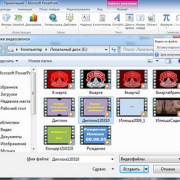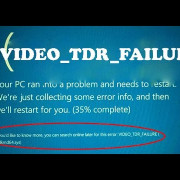Spdr s&p 500 (spy)
Содержание:
Business Involvement
Business Involvement metrics can help investors gain a more comprehensive view of specific activities in which a fund may be exposed through its investments.
Business Involvement metrics are not indicative of a fund’s investment objective, and, unless otherwise stated in fund documentation and included within a fund’s investment objective, do not change a fund’s investment objective or constrain the fund’s investable universe, and there is no indication that an ESG or Impact focused investment strategy or exclusionary screens will be adopted by a fund. For more information regarding a fund’s investment strategy, please see the fund’s prospectus.
Review the MSCI methodology behind the Business Involvement metrics, using links
MSCI — Controversial Weapons
as of Aug 12, 2021
0.84%
MSCI — UN Global Compact Violators
as of Aug 12, 2021
0.69%
MSCI — Nuclear Weapons
as of Aug 12, 2021
0.63%
MSCI — Thermal Coal
as of Aug 12, 2021
0.00%
MSCI — Civilian Firearms
as of Aug 12, 2021
0.14%
MSCI — Oil Sands
as of Aug 12, 2021
0.00%
MSCI — Tobacco
as of Aug 12, 2021
0.65%
Business Involvement Coverage
as of Aug 12, 2021
99.79%
Percentage of Fund not covered
as of Aug 12, 2021
0.21%
BlackRock business involvement exposures as shown above for Thermal Coal and Oil Sands are calculated and reported for companies that generate more than 5% of revenue from thermal coal or oil sands as defined by MSCI ESG Research. For the exposure to companies that generate any revenue from thermal coal or oil sands (at a 0% revenue threshold), as defined by MSCI ESG Research, it is as follows: Thermal Coal 0.12% and for Oil Sands 1.37%.
What Is the SPY ETF?
The SPDR S&P 500 Trust ETF, also known as the SPY ETF, is one of the most popular funds that aims to track the Standard & Poor’s 500 Index, which comprises 500 large- and mid-cap U.S. stocks. These stocks are selected by a committee based on market size, liquidity, and industry. The S&P 500 serves as one of the main benchmarks of the U.S. equity market and indicates the financial health and stability of the economy.
Key Takeaways
- The SPDR S&P 500 ETF Trust, also known as the SPY ETF, is one of the most popular funds that aims to track the Standard & Poor’s 500 Index, which comprises 500 large- and mid-cap U.S. stocks.
- Its top 10 holdings are heavily weighted in technology companies such as Apple, Microsoft, and Amazon—approximately one-quarter of the SPY ETF is invested in the technology sector.
- With a four-star Morningstar rating, the SPDR S&P 500 ETF Trust has generated an average annual return of just under 10% since inception.
Sustainability Characteristics
Sustainability Characteristics can help investors integrate non-financial, sustainability considerations into their investment process. These metrics enable investors to evaluate funds based on their environmental, social, and governance (ESG) risks and opportunities. This analysis can provide insight into the effective management and long-term financial prospects of a fund. Learn more.
The metrics below have been provided for transparency and informational purposes only. The existence of an ESG rating is not indicative of how or whether ESG factors will be integrated into a fund. The metrics are based on MSCI ESG Fund Ratings and, unless otherwise stated in fund documentation and included within a fund’s investment objective, do not change a fund’s investment objective or constrain the fund’s investable universe, and there is no indication that an ESG or Impact focused investment strategy or exclusionary screens will be adopted by a fund. For more information regarding a fund’s investment strategy, please see the fund’s prospectus.
Review the MSCI methodology behind Sustainability Characteristics, using links
MSCI ESG Fund Rating (AAA-CCC)
as of Aug 06, 2021
A
MSCI ESG Quality Score (0-10)
as of Aug 06, 2021
5.8
MSCI ESG Quality Score — Peer Percentile
as of Aug 06, 2021
40.68%
MSCI ESG % Coverage
as of Aug 06, 2021
99.24%
Fund Lipper Global Classification
as of Aug 06, 2021
Equity US
MSCI Weighted Average Carbon Intensity (Tons CO2E/$M SALES)
as of Aug 06, 2021
133.67
Funds in Peer Group
as of Aug 06, 2021
3,326
All data is from MSCI ESG Fund Ratings as of Aug 06, 2021, based on holdings as of Jun 30, 2021. As such, the fund’s sustainable characteristics may differ from MSCI ESG Fund Ratings from time to time.
SPY ETF FAQs
What Is the Difference Between an ETF and a SPDR?
An exchange-traded fund (ETF) is the broad name for a kind of security that aggregates or tracks multiple stocks within an index, industry, or another grouping. Meanwhile, SPDRs are a type of specific exchange-traded fund issued by State Street Global Advisors that tracks a specific index such as the S&P 500.
What Does SPDR Stand For?
SPDR stands for Standard & Poor’s Depositary Receipt. SPDR ETFs have a fixed number of shares that are exchanged and traded like stocks on the open market.
Is the SPDR S&P 500 ETF a Good Investment?
Yes. The SPY ETF diversifies exposure to the U.S. equity market and is suitable for investors willing to take on a moderate level of risk.
The Bottom Line
The SPDR S&P 500 ETF Trust offers investors an efficient way to diversify their exposure to the U.S. equity market without having to invest in multiple stocks. Therefore, SPY is suitable for any investors who want to include U.S. equities in their portfolio while taking only a moderate level of risk.
That being said, since the SPDR S&P 500 ETF Trust tracks 500 large- and mid-cap stocks in the United States, it carries a multitude of risks, such as market risk, country risk, currency risk, economic risk, and interest rate risk. Investors should be aware of both world and U.S. economic data, which could affect the performance of the fund.
Characteristics
The SPDR S&P 500 ETF Trust is structured as a unit investment trust, which is a security that is designed to purchase a fixed portfolio of assets. SPY is listed on the New York Stock Exchange’s Arca Exchange, and investors can trade this ETF on multiple platforms. The trustee of the SPDR S&P 500 ETF Trust is State Street Bank and Trust Company, and its distributor is ALPS Distributors Incorporated.
The fund has a gross expense ratio of 0.095%. While this ratio is low, it is not the lowest among other ETFs that track the S&P 500 Index. SPY’s expense ratio is more than triple the Vanguard S&P 500 ETF’s expense ratio of 0.03%. These fees do not include any broker fees or commissions.










